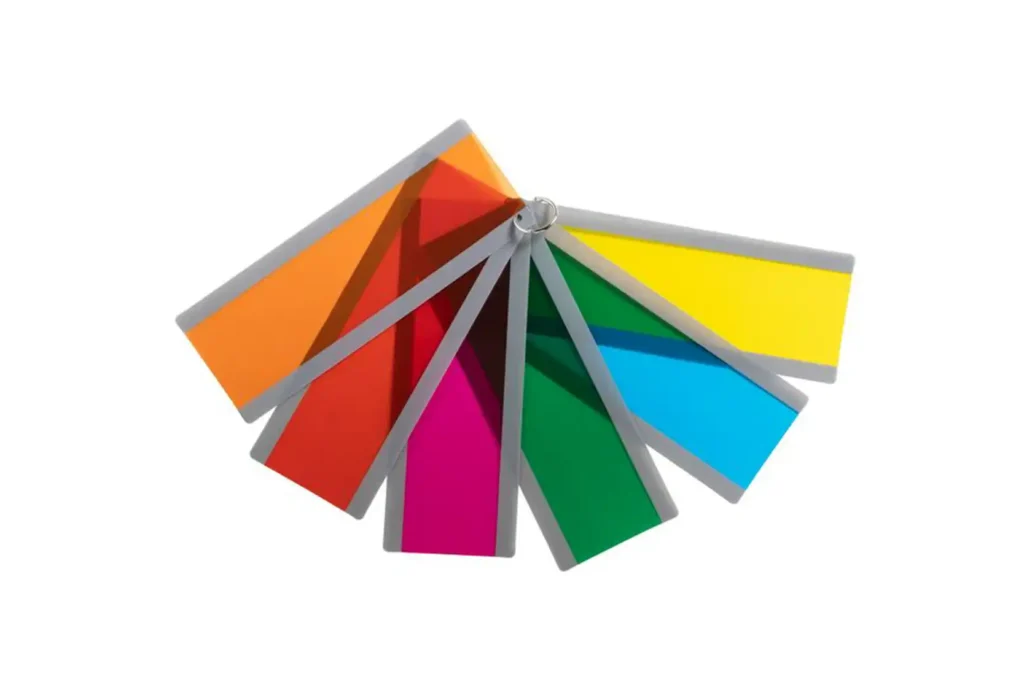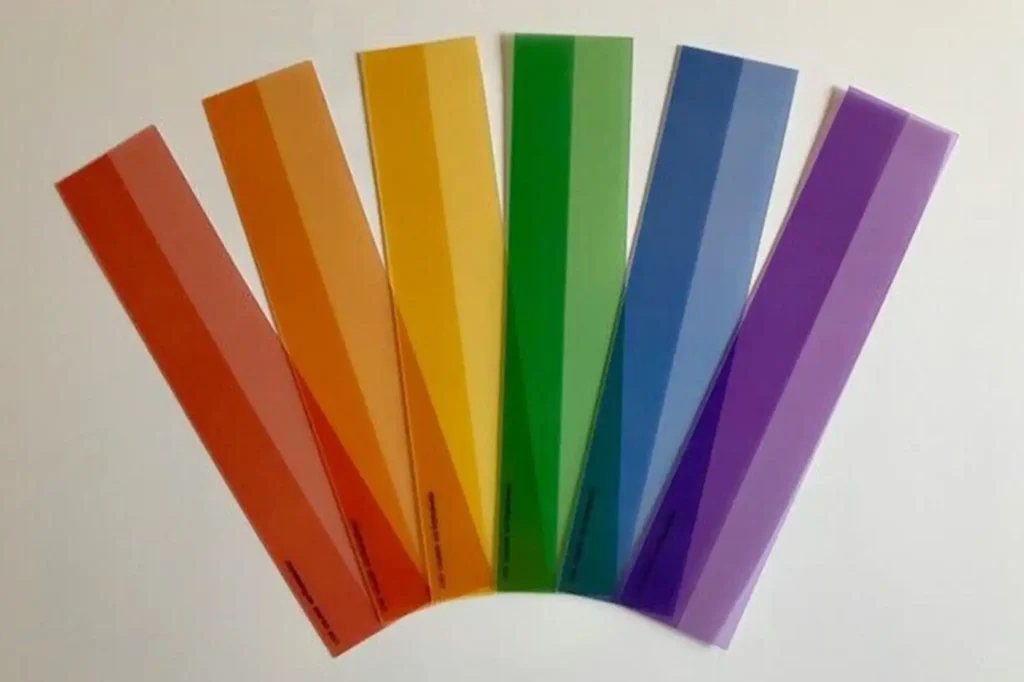Learn Colored overlays for dyslexia help reduce visual stress and improve reading fluency by enhancing text clarity and stability. These transparent sheets, available in various colors, address issues like glare and word distortions, making reading more comfortable for individuals with dyslexia.
Introduction to Colored Overlays for Dyslexia:
Colored overlays can significantly help individuals with dyslexia by reducing visual stress and improving reading fluency, comprehension, and comfort. These simple, transparent sheets are available in various colors and can make a world of difference for those struggling with reading challenges linked to dyslexia. By altering the contrast and background, colored overlays reduce distortions, making text appear clearer and more stable.
Dyslexia is a neurological condition affecting reading, writing, and spelling skills, often accompanied by symptoms like difficulty in recognizing letters and decoding words. Many people with dyslexia experience “visual stress” or discomfort while reading, which can make the text appear jumbled or blurry. Colored overlays provide a practical, non-invasive solution by addressing these issues, making reading more accessible and enjoyable.
No, they are an affordable intervention compared to other dyslexia tools.
What Are Colored Overlays and How Do They Work:
Colored overlays are thin, transparent sheets made in various hues, including blue, green, pink, and yellow. They work by changing the background contrast between the text and the paper, helping to alleviate the visual distortions often experienced by individuals with dyslexia. These overlays reduce the glare and “movement” of words on the page, making reading less stressful.
The effectiveness of colored overlays varies from person to person. Some individuals might notice an immediate improvement in their ability to focus and read for extended periods, while others may experience more subtle benefits. Research suggests that the Irlen Method, which involves identifying the optimal overlay color, can be a helpful tool in determining the most effective shade for each person.

How to Use Colored Overlays for Dyslexia:
Using colored overlays Dyslexia is straightforward and requires no technical expertise. The individual places the overlay on the reading material, such as books, worksheets, or digital screens, to enhance readability. It’s essential to experiment with different colors to determine the most effective shade for the user.
A common approach is to consult with an educational specialist or optometrist experienced in dyslexia interventions. They may use tools like the Irlen Assessment to identify the best overlay color for alleviating visual stress. Once identified, the user can carry their preferred overlay to use in various reading environments.
Benefits of Colored Overlays for Dyslexia:
- Improved Reading Fluency: Colored overlays can help individuals read faster and with fewer errors. By reducing visual discomfort, readers can maintain focus and comprehension.
- Reduced Eye Strain: Many individuals with dyslexia report headaches or eye fatigue while reading. Colored overlays reduce these symptoms, making reading a more pleasant experience.
- Increased Confidence: Struggling with reading can impact self-esteem. With the aid of overlays, users often feel more empowered and confident in their abilities.
- Cost-Effective and Accessible: Compared to other interventions, colored overlays are affordable and easy to implement. They are portable, making them a convenient tool for school, work, or home.

Do Colored Overlays Work for Everyone with Dyslexia:
While colored overlays provide significant benefits for many, they might not work for everyone. Dyslexia is a multifaceted condition, and the degree to which overlays are effective depends on the individual’s specific challenges. Combining overlays with other interventions, such as phonics-based programs or specialized tutoring, can offer comprehensive support for those with dyslexia.
Consulting with professionals who specialize in dyslexia can provide a tailored approach. This ensures that any intervention, including the use of colored overlays, is part of a holistic strategy to support the individual’s needs.
How to Choose the Right Colored Overlay:
Choosing the correct overlay involves trial and error or professional assessment. Here’s a simple step-by-step guide.
- Experiment with Colors: Try out various overlays to identify the one that provides the most comfort and clarity.
- Seek Professional Help: Specialists trained in the Irlen Method or other dyslexia-related assessments can help pinpoint the best color.
- Test Across Settings: Ensure the overlay works effectively in different lighting conditions and on various materials.
FAQ
Most frequent questions and answers
No, colored overlays do not cure dyslexia but can significantly reduce visual stress and improve reading comfort and efficiency.
Consulting an educational specialist or conducting at-home trials with different colors can help determine the best fit.
No, they are an affordable intervention compared to other dyslexia tools, typically costing around $10–$25 per sheet.
Conclusion:
Colored overlays for dyslexia offer a simple yet effective solution to enhance reading for those who struggle with visual stress. While they don’t address all aspects of dyslexia, these affordable tools can significantly improve reading comfort and confidence. By experimenting with colors or seeking professional guidance, individuals with dyslexia can find the right overlay to meet their unique needs. Combine this tool with comprehensive dyslexia support strategies for the best outcomes.








